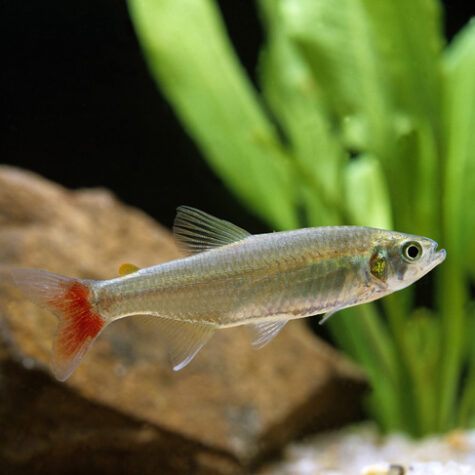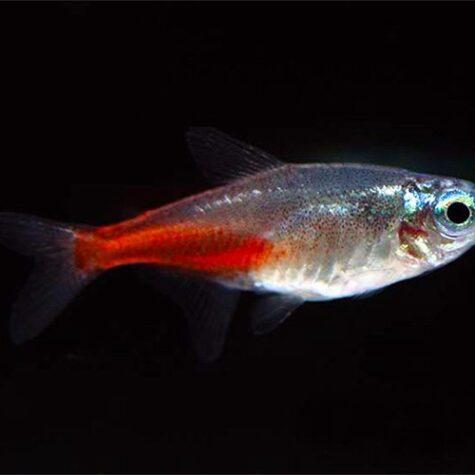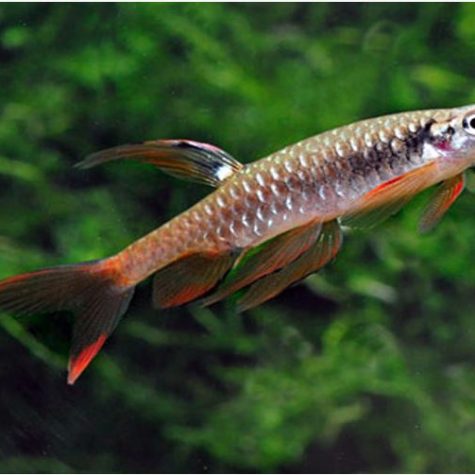$15.42
*NOTE: AS A FISH FARM, WE DO NOT OFFER GENDER SPECIFIC SEXING ON FISH STOCK. REQUEST FOR MALES OR FEMALES CAN ONLY BE ACCOMMODATED IF THE ITEM SPECIFIES GENDER IN THE DESCRIPTION SUCH AS: MALE BETTA, FEMALE GUPPY, ETC SORRY FOR ANY INCONVENIENCE.
Out of stock
This species is not often available and is much sought after in the aquarium hobby.
It’s currently the only member of the genus and is separated from other characid genera by the following combination of characters: adult size less than 17 mm
The small adult size evolved via a process known as miniaturisation, characterised by sexually mature adults with a significantly reduced size of less than 20 mm.
Toucan Tetra
Tucanoichthys tucano
Max Length: 15 – 17 mm (1/2 – 3/4″)
Water Conditions
Temperature: 20 – 28 °C
pH: 4.0 – 6.5
Hardness: 18 – 143 ppm
This is a micro fish ideal for small habitats! Tucanoichthys: named for the Tucano Indians which are native to the upper rio Negro and rio Uaupés (Vaupés in Colombia) regions in Amazonas state, Brazil and Vaupés department, Colombia. The suffix ichthys is Greek for ‘fish’.
Family: Characidae
Distribution: Known only from the rio Uaupés system in Brazil w type locality ‘brook emptying into Igarape Yavuari River, tributary of River Uaupés, upper Negro River basin. The full extent of its range is unclear but additional populations may exist.
Maintenance
Best-maintained in a well-structured set-up, ideally comprising a sandy substrate plus lots of driftwood roots and branches. almond leaves, & peat.
The addition of dried leaf litter further emphasises the natural feel and as well as offering additional cover for the fish brings with it the growth of microbe colonies as decomposition occurs. These can provide a valuable secondary food source for fry and the tannins and other chemicals released by the decaying leaves are also considered beneficial for fishes from blackwater environments. Alder cones may also be used for the latter purpose. This species seems to do best under fairly dim lighting. You can add aquatic plant species that can survive under such conditions such as Microsorum, Taxiphyllum or Cryptocoryne spp., while floating vegetation, especially Ceratopteris spp., is also useful. For breeding purposes acidic conditions with negligible carbonate hardness and very low general hardness are required so a reverse osmosis unit or other method of obtaining soft water may need to be employed, and this can be further acidified using phosphoric acid or similar if necessary.
Diet: In nature, a micropredator feeding on tiny invertebrates and other zooplankton.
In the aquarium it will accept dried foods of a suitable size but should also be offered small live and frozen fare such as Artemia nauplii, Daphnia, Moina, grindal worm, etc.
Peaceful with other species but does not make an ideal community fish due to its small size and somewhat specialised requirements
Ideally it should be maintained alone or at most with diminutive, non-aggressive characids and smaller callichthyid or loricariid catfishes.
It also makes an ideal dither fish for Apistogramma spp. and other dwarf cichlids since it tends to inhabit the middle-to-upper regions of the tank.
Though gregarious by nature it’s a shoaling rather than schooling species with territorial rival males sparring on a regular basis.
8-10 specimens should be the minimum purchase since the fish will be less shy and display more interesting behaviour.
Sexual Dimorphism
Adult males are more intensely-coloured than females with reddish pigmentation in the dorsal, caudal and anal fins.
Sexually mature females may appear rounder-bodied than males, especially when gravid.
Reproduction
Has been achieved and in a properly-structured, mature aquarium it’s possible that small numbers of fry may start to appear without intervention.
Nuptial males form temporary territories based around a solid surface such as a plant leaf or piece of wood, and wild individuals have been observed to defend this not only against conspecific rivals but any other fish in the vicinity.
Post-spawning the male remains with the eggs until they hatch with incubation around 24 hours, and once free-swimming the fry have an iridsecent bluish-green colour pattern during the early stages of life.
All display a preference for still or slow-moving waters and often occur in nutrient-poor habitats such as forest streams.
Characiformes is among the most diverse orders of freshwater fishes currently including close to 2000 valid species distributed among 19 families.




